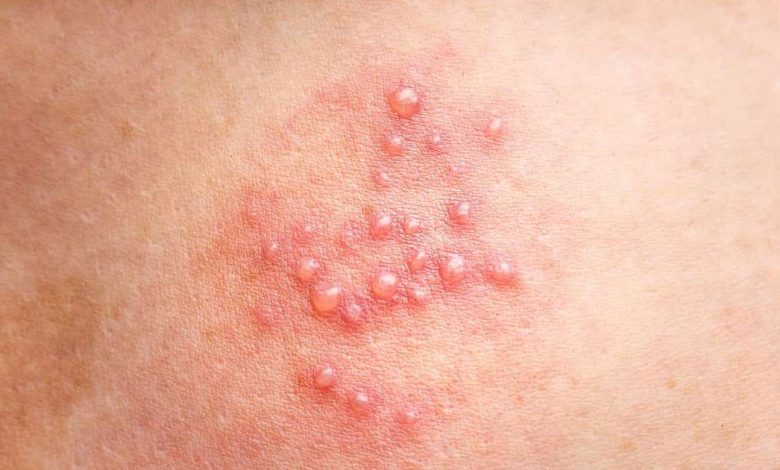Papules on the skin: What's it, causes, symptoms, diagnostics, treatment, prevention

Papules
Papula – it is a small bump on the skin, which can take various forms, sizes and color. This medical term refers to one of the many elements of the rash., which can appear on the skin for various reasons.
What is a papule?
Papula – it is a small bump on the surface of the skin, whose dimensions can vary from a few millimeters to a centimeter. It can be flat or conical in shape and come in a variety of colors., like red, pink, brown or white.
Causes of papules
Papules can appear on the skin for various reasons.:
- Dermatitis: Inflammatory processes on the skin can cause the appearance of papules.
- Infection: Certain infections, such as viral warts or chicken pox, can cause papules to form.
- Allergic reactions: Allergies to certain substances or foods can lead to the appearance of papules on the skin.
- Skin diseases: Some skin diseases, such as acne or lupus erythematosus, may be accompanied by the formation of papules.
Symptoms of papules
The main symptom of a papule is its presence on the surface of the skin.. Other characteristic symptoms may include:
- Bulging on the skin.
- Change in skin color at the site of the papule.
- Possible itching or discomfort in the area of the papule.
When to see a doctor
If you find a papule on your skin and have concerns or questions, should see a doctor or dermatologist. They can conduct the necessary examination and give recommendations for further actions..
Questions, which the doctor may ask
When visiting a doctor, you may encounter such questions:
- How long ago did you notice the papule?
- Do you have itching, pain or discomfort in the area of the papule?
- Do you have allergies or other skin problems?
Diagnosis of papules
Diagnosis of papules usually begins with a visual examination by a doctor or dermatologist.. The doctor will pay attention to the characteristics of the papule, such as size, shape, color, texture and location on the skin. Besides, your doctor may ask you a series of questions about your symptoms, time of occurrence and other factors, which can help determine the cause of the papule.
Additional studies may be required to more accurately diagnose and determine the cause of the papule.:
- Dermatoscopy: This is the method, in which the doctor uses a special device, called a dermatoscope, to take a closer look at the papule and surrounding skin.
- Biopsy: In some cases, the doctor may decide to do a biopsy, in which a small sample of papule tissue will be taken for laboratory testing. This may help determine the nature of the papule and rule out malignant changes..
- Blood test: In some cases, a blood test may be done to check for possible allergic reactions or infections., which may be associated with the appearance of papules.
After carrying out diagnostic procedures, the doctor will be able to more accurately determine the cause of the papule and offer an appropriate treatment plan..
Treatment of papules
Treatment for papules depends on their cause., characteristics and accompanying symptoms. In some cases, papules may disappear on their own., especially if they are caused by temporary factors, such as an allergic reaction or slight inflammation. But, other situations may require active treatment.
Treatment depending on the cause of the papule:
- Inflammation and infections: If the papule is caused by inflammation or infection, your doctor may prescribe antibiotics or antiseptics to fight infection and reduce inflammation.
- Allergic reactions: If the papule is associated with allergies, it is important to identify and eliminate the allergen. Your doctor may recommend antihistamines to reduce allergy symptoms.
- Skin diseases: If the papule is associated with any skin disease, a doctor may suggest specific treatment to manage the condition.
Procedures and treatments for papules:
- Cryotherapy: This is the method of treatment, in which the papule is frozen using liquid nitrogen, what helps to remove it.
- Electrocoagulation: The papule is removed with an electric current, which dries and coagulates tissue.
- Laser therapy: Lasers can be used to pinpoint papule removal with minimal damage to surrounding tissue..
- Surgical removal: In some cases, the doctor may decide to perform surgical removal of the papule., especially if malignant changes are suspected.
It should be noted, that treatments may vary depending on the type of papule and its cause. It is important to consult with a healthcare professional to determine the most appropriate treatment approach..
Self-medication and care in the presence of papules
If the papule does not cause discomfort and does not require specific treatment, you can take the following steps:
- Avoid scratching and rubbing at the site of the papule.
- Maintain skin hygiene, to prevent possible infections.
- Apply gentle moisturizers to the skin around the papule.
- Avoid contact with allergens, if they are suspected as the cause of the papule.
Prevention of papules
Since papules can have a variety of causes, difficult to prevent completely. However, following some precautions can reduce the risk of their occurrence.:
- Maintain good skin hygiene.
- Avoid contact with substances, which can cause an allergic reaction.
- Be careful when working with chemicals or sharp objects.
- Maintain a healthy lifestyle and proper nutrition to strengthen the immune system.
Used sources and literature
Gawkrodger DJ, Ardern-Jones MR. Terminology of skin lesions. In: Gawkrodger DJ, Ardern-Jones MR, eds. Dermatology: An Illustrated Colour Text. 7th ed. Philadelphia, PA: Elsevier; 2021:chap 7.
James WD, Elston DM, Treat JR, Rosenbach MA, Neuhaus IM. Cutaneous signs and diagnosis. In: James WD, Elston DM, Treat JR, Rosenbach MA, Neuhaus IM, eds. Andrews’ Diseases of the Skin: Clinical Dermatology. 13th ed. Philadelphia, PA: Elsevier; 2020:chap 2.
